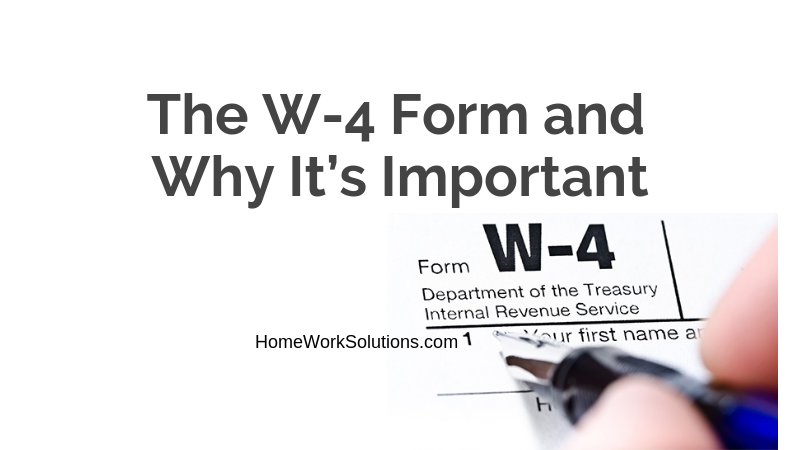
If you’ve just completed your tax return and you have realized that you have claimed too much or too little, it may be time to reevaluate your W-4 form. Here is why the W-4 form is so important: the W-4 is completed by you as the employee and tells your employer how much of your gross earnings need to be deducted from your paycheck for taxes.
W-4 specifics:
The form will ask you how many people you provide for, otherwise known as allowances. You can claim the following:
- One allowance for yourself, only if no one else claims you as a dependent
- One allowance for every dependent who is not you or your spouse (such as children)
- One allowance for your spouse if he/she is not employed, or one or zero allowances if he/she is employed
- One extra allowance if you file as head of the household, such as an unmarried person that pays more than 50% of the costs of a home for themselves and dependents
The bottom line: the more exemptions you claim, the less tax that is deducted. The fewer exemptions you claim, the more tax is deducted.
If you over-withhold your money, the good news is the government will not penalize you for paying too much. You’ll get a tax refund in the amount that was overpaid. The downside is that you are technically making an interest-free loan to the IRS during the year. For example, if you are overpaying $300 a month from your paycheck each month you cannot access it until the next year when you go to file your taxes. When you do get the money back, you will have not earned any interest in it, whereas if you would have had that money during the year, you could invest it in a different way and see growth on it. Or, you could be using that extra to pay off debt, which is a smart financial move, too. We hope this article clearly explained the W-4 form and why it’s important.
April is a good time to review your W-4 and determine if it is set up with your best interest in mind.
